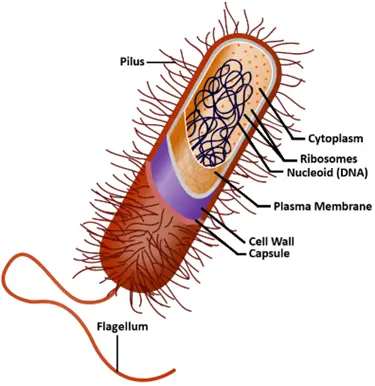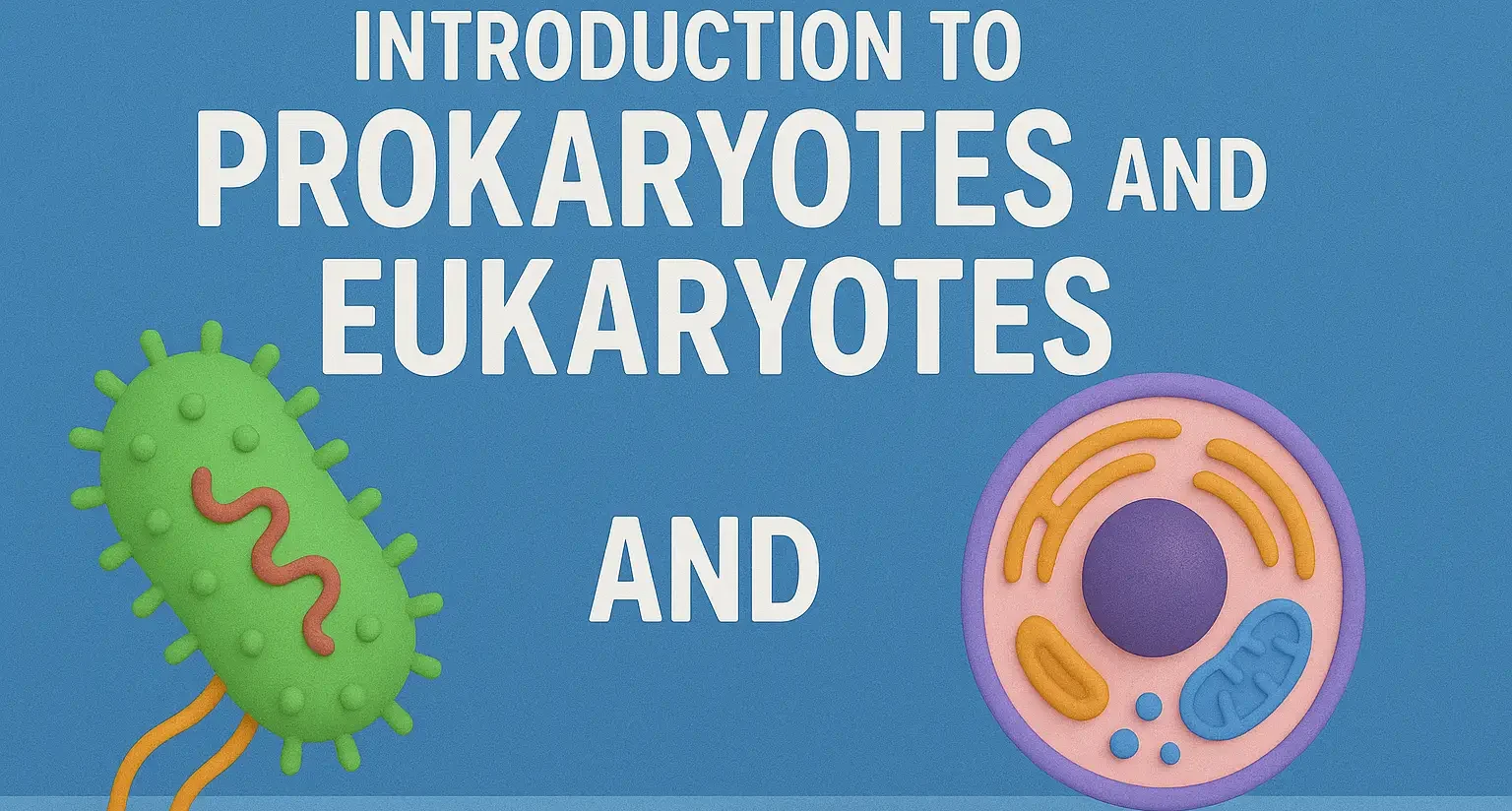Prokaryotes and Eukaryotes
- All living organisms are categorized into two fundamental types of cells: prokaryotic and eukaryotic.
- This distinction is based on cellular structure and complexity.
- Prokaryotes include bacteria and archaea, while eukaryotes encompass a broad range of organisms including animals, plants, fungi, and protists.
Prokaryotes
- Prokaryotes are unicellular organisms that lack a defined nucleus and membrane-bound organelles. They are simpler and smaller than eukaryotic cells.
Characteristics of Prokaryotes:
Cell Structure:

- Nucleus: No true nucleus; instead, they have a nucleoid region where the DNA is located.
- DNA: Single, circular chromosome. Plasmids (small circular DNA molecules) may also be present.
- Cell Membrane: Surrounded by a plasma membrane and often a rigid cell wall.
- Ribosomes: Smaller (70S) than those in eukaryotic cells.
- Organelles: Lack membrane-bound organelles. Functions are carried out in the cytoplasm or at the cell membrane.
- Size: Smaller, typically 0.1-5.0 µm in diameter.
Reproduction:
- Binary Fission: Asexual reproduction where the cell divides into two genetically identical cells.
Examples:
- Bacteria (e.g., Escherichia coli, Streptococcus)
- Archaea (e.g., Methanogens, Halophiles)
Eukaryotes
- Eukaryotes are organisms whose cells contain a true nucleus and membrane-bound organelles.
- They can be unicellular or multicellular, and they exhibit a higher level of complexity than prokaryotic cells.
Characteristics of Eukaryotes:
-
Cell Structure:
- Nucleus: Defined, membrane-bound nucleus containing the cell’s genetic material.
- DNA: Linear chromosomes within the nucleus.
- Cell Membrane: Plasma membrane encloses the cell. In plants, fungi, and some protists, there is also a rigid cell wall.
- Ribosomes: Larger (80S) than those in prokaryotic cells.
- Organelles: Presence of membrane-bound organelles such as mitochondria, endoplasmic reticulum, Golgi apparatus, lysosomes, and (in plants and some protists) chloroplasts.
- Size: Larger, typically 10-100 µm in diameter.
-
Reproduction:
- Mitosis and Meiosis: Mitosis for asexual reproduction and growth; meiosis for sexual reproduction leading to genetic diversity.
-
Examples:
- Animals (e.g., Humans, Insects)
- Plants (e.g., Trees, Flowers)
- Fungi (e.g., Yeasts, Mushrooms)
- Protists (e.g., Amoeba, Algae)
Key Differences Between Prokaryotes and Eukaryotes
| Feature | Prokaryotes | Eukaryotes |
| Nucleus | No true nucleus (nucleoid region) | Membrane-bound nucleus |
| DNA | Circular DNA | Linear chromosomes |
| Cell Size | Smaller (0.1-5.0 µm) | Larger (10-100 µm) |
| Cell Division | Binary fission | Mitosis and meiosis |
| Organelles | No membrane-bound organelles | Membrane-bound organelles present |
| Ribosomes | Smaller (70S) | Larger (80S) |
| Cell Wall | Present in most (made of peptidoglycan) | Present in plants and fungi (cellulose or chitin) |
| Complexity | Simpler structure | More complex structure |
| Reproduction | Asexual reproduction (binary fission) | Asexual (mitosis) and sexual (meiosis) |
| Examples | Bacteria, Archaea | Animals, Plants, Fungi, Protists |

